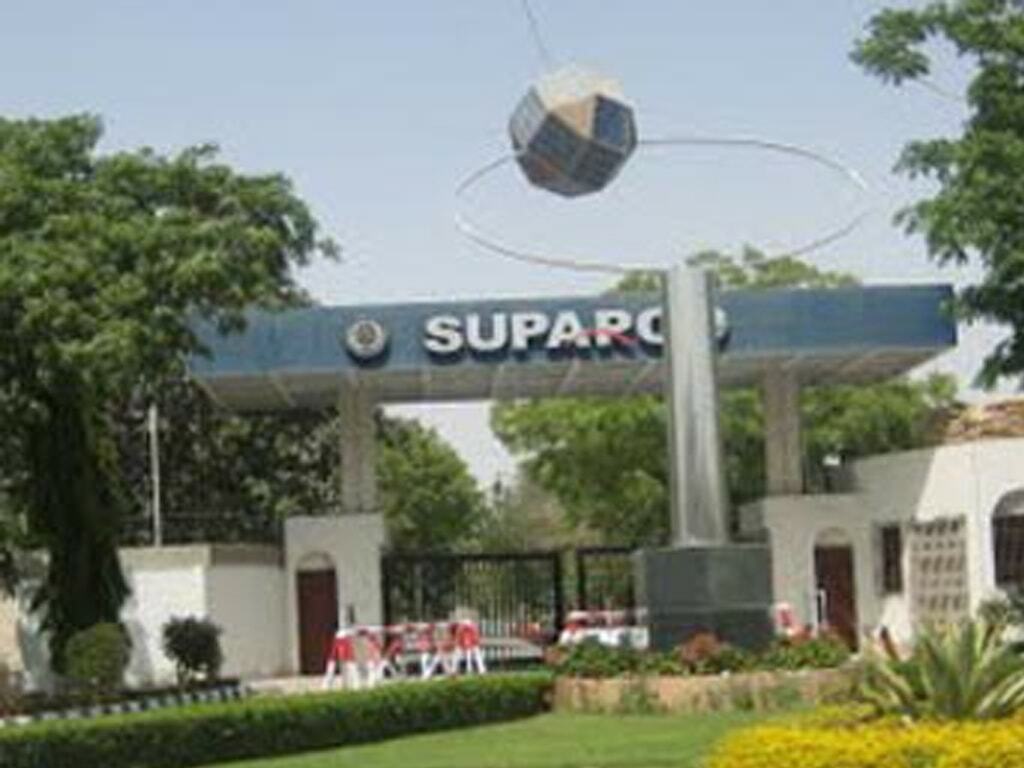Pakistan has made significant strides in the field of space exploration and technology. The name of Pakistan's national space agency is the Space and Upper Atmosphere Research Commission, commonly known as SUPARCO. Established in 1961, SUPARCO has played a pivotal role in advancing Pakistan's space research, satellite development, and exploration capabilities. This article delves into the history, achievements, and future goals of SUPARCO, highlighting its importance in the global space race
The History of SUPARCO
SUPARCO was established on September 16, 1961, under the visionary leadership of Dr. Abdus Salam, Pakistan's first Nobel laureate in Physics. Initially, the organization operated as a part of the Pakistan Atomic Energy Commission (PAEC). Its primary focus was to conduct research in space science and develop technologies for peaceful purposes.
The Space and Upper Atmosphere Research Commission (SUPARCO) has been a cornerstone of Pakistan's advancements in space technology. From launching its first rocket in 1962 to developing advanced satellites, SUPARCO has proven its potential in the global space arena. Despite challenges, its contributions to national development and aspirations for the future underscore its importance. By investing in SUPARCO and fostering international collaboration, Pakistan can continue to make significant strides in space exploration and technology.

Milestones in the 1960s
-
Rehbar-I Launch (1962): Pakistan became the first country in South Asia to launch a rocket into space with the successful launch of Rehbar-I.
-
Rehbar-II Launch (1962): Shortly after Rehbar-I, SUPARCO launched Rehbar-II, showcasing its growing capabilities in rocket technology.
These early achievements positioned Pakistan as a pioneer in space exploration within the region.
Challenges in the 1970s and 1980s
During the 1970s, SUPARCO faced significant challenges, including political instability and a lack of consistent funding. The focus shifted toward other national priorities, which slowed the progress of the space program. However, efforts were made to sustain research activities and maintain international collaborations.
Revival in the 1990s
The 1990s marked a revival for SUPARCO with the launch of Pakistan's first indigenously developed satellite, Badr-A, in 1990. This achievement reinvigorated the space program and demonstrated Pakistan's capability to contribute to the global space community. The subsequent launch of Badr-B in 2001 further solidified SUPARCO's position in space technology development.
Key Objectives of SUPARCO
SUPARCO's mission revolves around utilizing space technology for national development and contributing to global space exploration efforts. Its primary objectives include:
-
Satellite Development: Designing and launching satellites for communication, weather monitoring, and remote sensing.
-
Space Research: Conducting research in astrophysics, atmospheric sciences, and space technology.
-
National Security: Enhancing Pakistan's defense capabilities through space-based surveillance and communication systems.
-
Educational Outreach: Promoting space science education and inspiring the younger generation to pursue careers in STEM fields.
Achievements of SUPARCO
Satellite Launches
-
Badr-A (1990):
-
Pakistan's first indigenously developed low-Earth orbit satellite.
-
Marked a significant milestone in Pakistan's space program.
-
-
Badr-B (2001):
-
An upgraded version of Badr-A with enhanced capabilities.
-
Used for Earth observation and scientific experiments.
-
-
PAKSAT-1R (2011):
-
A communication satellite was launched in collaboration with China.
-
Provides telecommunications, broadband internet, and TV broadcasting services across Pakistan.
-
Collaboration with International Space Agencies
SUPARCO has established partnerships with various international organizations, including NASA, ESA (European Space Agency), and China National Space Administration (CNSA). These collaborations have enabled Pakistan to access advanced space technologies and participate in global space missions.
SUPARCO's Role in National Development
Disaster Management
SUPARCO’s satellites play a crucial role in monitoring natural disasters such as floods, earthquakes, and droughts. The data collected helps in planning and implementing disaster relief operations effectively.
Agricultural Monitoring
Using remote sensing technology, SUPARCO provides valuable insights into crop health, irrigation patterns, and land usage. This information aids in improving agricultural productivity and ensuring food security.
Telecommunications and Connectivity
Through satellites like PAKSAT-1R, SUPARCO has revolutionized telecommunications in Pakistan. It provides reliable internet and broadcasting services, even in remote areas.
Challenges Faced by SUPARCO
Despite its achievements, SUPARCO faces several challenges:
-
Limited Funding: Insufficient financial resources hinder the development of advanced space technologies.
-
Brain Drain: Many skilled scientists and engineers leave Pakistan for better opportunities abroad.
-
Global Competition: Competing with well-established space agencies like NASA and ISRO requires significant investment and innovation.
Future Goals of SUPARCO
SUPARCO aims to expand its capabilities and contribute more significantly to global space exploration. Its future goals include:
-
Developing Advanced Satellites: Enhancing the capabilities of communication and Earth observation satellites.
-
Human Spaceflight Program: Exploring the possibility of sending Pakistani astronauts into space.
-
Space Research Centers: Establishing state-of-the-art research facilities across Pakistan.
-
International Collaboration: Strengthening partnerships with leading space agencies to share knowledge and resources.
.jpg)
FAQs About Pakistan's National Space Agency
1. What is the name of Pakistan's national space agency?
The name of Pakistan's national space agency is the Space and Upper Atmosphere Research Commission (SUPARCO).
2. When was SUPARCO established?
SUPARCO was established on September 16, 1961.
3. What are the main achievements of SUPARCO?
SUPARCO’s main achievements include the launch of Rehbar-I, Badr-A, Badr-B, and PAKSAT-1R, as well as its contributions to disaster management and telecommunications.
4. What are SUPARCO's future goals?
SUPARCO aims to develop advanced satellites, establish space research centers, and explore human spaceflight opportunities.
5. How does SUPARCO contribute to national development?
SUPARCO supports disaster management, agricultural monitoring, and telecommunications, improving Pakistan’s infrastructure and economy.





.gif)








.gif)







Sign in
to continue to ilmkidunya.com